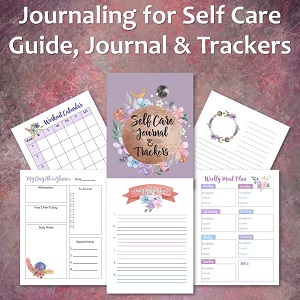 A hormone imbalance happens when your body produces too much or too few hormones needed for optimal health. When that happens, this health issue can cause disruption physically as well as emotionally.
A hormone imbalance happens when your body produces too much or too few hormones needed for optimal health. When that happens, this health issue can cause disruption physically as well as emotionally.
There are numerous things that can lead to a hormone balance – including seasons of life change such as menopause as well as certain medications or a lack of important nutrients in your diet.
Hormone Issues Resemble Other Ailments and are Often Missed
The problem with hormone issues is that they can be difficult to diagnose. Some women report that years go by before they get a proper diagnosis. The reason for this is because a hormone problem can mimic other conditions.
Because a hormone imbalance can have several symptoms, doctors sometimes fail to look at all of the symptoms as a whole and instead focus on each individual symptom.
That’s why it’s up to you to make sure that you’re tracking what’s going on with your own body.
You can start by keeping a detailed record of all your symptoms – even if you think it’s completely unrelated. You should track your monthly menstrual cycle by recording the date that it starts and the date that it ends.
When tracking this, it’s important that you indicate whether your flow was normal or not.
Doing this can help a doctor pinpoint if there’s a problem with your estrogen, since an imbalance in this hormone can lead to heavier flow even if you’ve always had normal menstrual cycles.
Keep records concerning your moods as well. While the emotional aspect might not seem that important, it can offer clues. Women who experience hormone imbalance can suddenly have trouble with mood swings.
This is often one of the first clues a woman recognizes – especially if she’s someone who has an upbeat personality and she suddenly finds that she’s feeling down a lot.
This can signify that a hormone imbalance is affecting her moods.
Sometimes, the symptoms of a hormone imbalance makes one physical issue more prominent than others. You can experience dry skin, fatigue, weight gain or frequent urination as part of a long list of symptoms associated with a hormone imbalance.
If you go to the doctor for frequent urination without all of the other symptoms, the first thing he’d check would be fore for an infection or for diabetes. Many women with a hormone imbalance will notice that their hair begins to thin.
If you go to the doctor and you’re older, many of them will often dismiss the thinning hair as being a sign of aging or a lack of vitamins. But if you have a detailed record where you’ve recorded thinning hair along with mood swings and other issues, it gives your doctor a better overview of what’s going on with your body.
When it comes to hormones, you have to be proactive and pay attention to even the smallest change going on with your body physically or emotionally. Because if you catch a hormone imbalance quickly, you can stop it from getting worse and causing you to suffer.
It’s important that you know how to be your greatest health advocate and the more you know about your health as well as the effects of a hormone imbalance, the quicker you can get back on the road to feeling better.
Getting Tested for Vital Hormone Levels
If it’s suspected that you might have a hormonal imbalance, this can sometimes be tested using bloodwork – because your hormone level can be identified in your blood. However, more often than not, you could need more than blood tests.
Your doctor may order more testing because there can be reasons behind the imbalance that need further evaluation. Some of these reasons include thyroid malfunction, adrenal fatigue, or pituitary gland problems.
When you get tested for a hormonal imbalance, it’s important that you have an accurate and up to date list of anything you’re taking – including natural supplements – because the ingredients in medications, supplements and vitamins can affect your hormone levels.
When blood is drawn, the doctor is looking for hormone levels within your thyroid, your adrenals, pituitary and he’s also looking specifically for your estrogen level as well as what your cortisol level might be.
The reason for this is because cortisol, which is the stress hormone, can cause you to have little energy and can mimic the same symptoms as menopause. The bloodwork could include an FSH test, which checks for how much follicle stimulating hormone you have.
This is an important hormone related to reproductive health and if it’s out of balance, it can cause heart palpitations, night sweats and mimic the symptoms of menopause.
If the bloodwork comes back with the hormone levels between the lab mandated range, but on the low end, the doctor may go ahead and order more testing such as imaging for the pituitary gland, thyroid, adrenal glands or abdomen so he can check your ovaries.
If the tests show that you’re too low or two high in some hormones, you may need to take medication to restore the balance. Instead of bloodwork, some doctors may prefer to have a patient undergo a saliva test.
To perform this test, the patient spits saliva into the provided container and it’s then sent to the lab for testing. The doctor might instruct you to spit at certain points during the day so that there’s an accurate measure of what your hormone level should be.
Your body is supposed to have higher levels of certain hormones in the morning than during other times of the day. If your level is low, then the doctor will be able to better determine what’s going on with your imbalance.
What he’s looking for with a saliva test is whether or not your estrogen and progesterone levels are within normal range. He’s also checking for your cortisol and the hormone DHEA. Abnormal levels of DHEA can lead to mood swings and cause a disruption in menstrual cycles.
Interpreting Your Results and Demanding an Action Plan for Relief
You can take a DIY test to check your levels yourself if you suspect that you may be experiencing a hormonal imbalance. This at home testing can alert you as to whether or not certain key hormones aren’t in the range that they should be.
There are various at home testing kits that you can order, and many of them are pretty inexpensive. After you buy one and receive it, you follow the instructions. The instructions will differ between the tests, but it’s important that you follow these carefully.
For example, some of the tests will have you giving a sample at a specific time. If you miss that window of time, you won’t get an accurate reading of certain hormone levels.
So if you have a test that you have to do throughout the day, it’s important to set alarms so that you don’t miss the time.
Any of the DIY testing kits you choose will have instructions on how and when to give your samples and if you’re testing some female hormones, this will be done between three and four times a day.
Since these are saliva samples, it’s easy to perform the test. You simply spit into whatever containers have been provided. These are usually labeled for the coordinating times already or you may have to write it on the vial’s label yourself.
When you’re done, you mail them back and wait for the results. You’ll receive these results back and be alerted to any levels that are low or high. There should be an explanation sheet for what the low and high level ranges are.
For example, if your test results show that one of your hormone levels is 1.3, that might not look too bad. But when you check the lab rage for that hormone and see that the low end cut off is 3.0, then you know that yours is too low.
Abnormal lab results in DIY kits are usually flagged with an H or an L for high or low – or they’ll have an asterisk beside them followed by an explanation at the bottom of the result page.
Any abnormal reading should be addressed, because a hormone imbalance can not only make you feel bad, but certain levels that are too low can lead to serious health consequences.
Some doctors may brush off hormones being out of balance as the patient just getting older. He might even suggest that it’s normal for hormones to get unbalanced as you get older.
But it is not normal. If your doctor brushes you off, you need to show him the records you’ve kept concerning all of your symptoms that could be hormone related followed by the DIY test results. Insist that he do more testing if needed or refer you to an endocrinologist, since these doctors specialize in endocrine health, including hormone imbalances.
Topical, Oral and Pellet Therapy Options
Hormone therapy is what occurs when it’s discovered that you have an imbalance that can benefit from or requires treatment. This kind of therapy can be a single hormone replacement or it can be a combination of hormones used to bring relief to those suffering from symptoms.
Topical therapy options are hormones that are put directly onto the skin to be absorbed and then carried through the body in the bloodstream. This topical therapy is good for helping to quickly replace the hormones that your body doesn’t have enough of.
The way that this therapy is used is found in an ointment that you apply often, as a gel or as a longer lasting patch that then secretes the hormone throughout the day. If you’re using a gel or an ointment, you do have to apply it throughout the day to mimic the hormone and keep the levels consistent throughout the day.
The effectiveness of the topical therapy depends on different factors. Not every patient will absorb the topical solution at the same time. So you may not get as much benefit as another person using the exact same topical solution.
Or you could end up getting it into your bloodstream faster than you should. When you use topical treatment therapies, there may be a lag time where, after you apply it, you have to be careful what you do to keep the hormone treatment from accidentally getting rubbed off.
The level of success with this method all depends on how your body reacts to the therapy. So it may be a bit of a trial and error period to find the topical treatment that works best for you.
Oral therapy is a treatment method that many women use to treat hormone imbalance. If you need estrogen or progesterone, you can take a pill for that. If your hormone imbalance is found to be caused by your thyroid, adrenals or pituitary gland, there are oral therapies to treat that as well.
This is usually performed by taking a pill once a day. The difference between this therapy and topical is that once you take it, you can go about your day. You don’t have to wait for cream to be absorbed into your skin.
Plus, you get a consistent dosage every time while the topical dosing can be affected by skin penetration rate as well as inconsistences in the amount applied. Pellet therapy is treatment involving bioidentical hormones that are placed directly beneath your skin.
The difference in this treatment and topical is that the amount of hormones you receive never varies. The pellets are implanted about twice a year. Most women like this treatment because once it’s implanted, they don’t have to worry about taking something every day.
And unlike topical therapy, which can vary depending on what you’re doing, since you can sweat that off during vigorous activities, the pellet reacts to your day to day activities. Just like a natural hormone, the pellet will release more hormones as your body has the need.
Bioidentical Versus Synthetic Hormones
There has long been a debate about the differences between bioidentical hormones versus the synthetic ones. Both of these have benefits as well as risks. Bioidentical hormones have the same structure as the hormones in your body.
This makes them the same hormonal makeup according to the chemical compound naturally produced even though they’re man-made. They’re an exact match to your body.
A synthetic hormone doesn’t have the same natural structure found in the body’s hormones. This means that the molecular creation of synthetic hormones will vary and they will never be an exact match.
The same bioidentical hormones can be found to replacem thyroid, estrogen, progesterone or adrenal glands function. Bioidentical hormones can be one hormone replacement, or they can be a created mixture of two natural hormones to produce the same effect natural hormones have on the body.
This joining of two or more hormones is known as compounding. Synthetic hormones are not used the same even if two people are prescribed the same pill and the same dosage.
That’s because the man made hormone isn’t the same structurally from manufacturer to manufacturer. Both types of replacement therapies can carry the risk of side effects. Bioidentical hormones don’t have to have FDA approval.
Synthetic hormones do. Both can improve hormone function. Bioidentical hormones are specific and prescribed based on what the patient must have to bring their hormone levels into a proper range.
Synthetic hormones are prescribed based on what’s offered by the manufacturer in milligrams and can’t be customized exactly to the individual need. The benefits that are associated with bioidentical hormone therapy are numerous.
The treatment can restore hormone levels. It can also promote bone health. The therapy is known to eliminate fatigue, which helps a patient feel better as well as helps her resume her normal activities.
The therapy can eliminate insomnia and allow patients to sleep well. It gets rid of the side effects associated with conditions like menopause such as hot flashes and night sweats.
It’s also known to restore lost sex drive. On the downside, bioidentical therapy can cause the risk of blood clots, stroke and gallbladder disease. Synthetic hormone replacement can eliminate fatigue, hot flashes and hair thinning.
It can also help with dry skin, bloating, insomnia and cognitive function. This therapy also carries risks. Among these risks are high blood pressure, heart diseases, blood clots, stroke and a high risk of developing certain types of cancer, especially breast cancer.
Regardless of which direction you choose to go – synthetic or bioidentical – or which type of treatment you select (pellets, pills, or topical), the best thing you can do is stay aware of any changes in your mental and physical condition so that you can aggressively advocate on your behalf with the medical community to alleviate symptoms and live the life you deserve.




